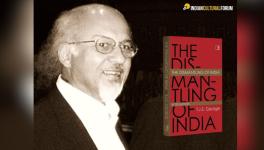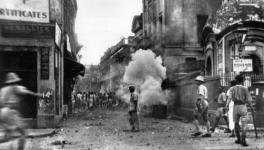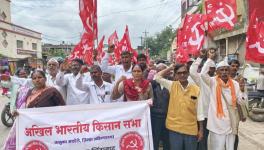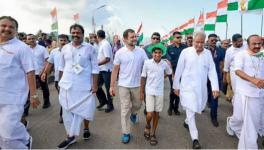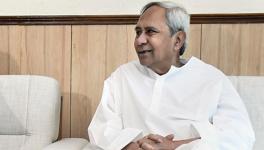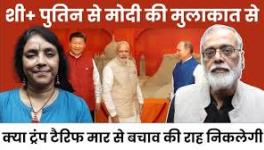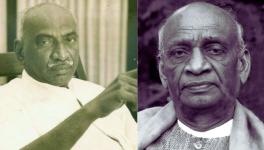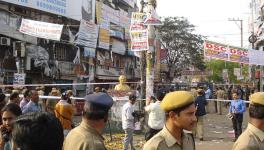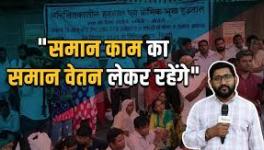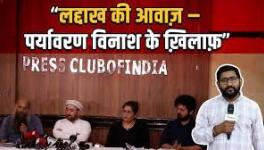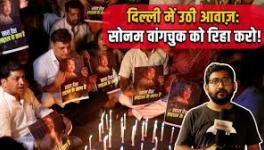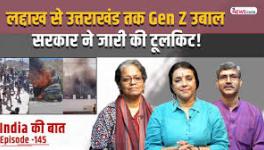Late Braj Basi Lal, Virtually a Sangh Parivar Member in Garb of Archaeologist
Representational use only.Image Courtesy: Wikimedia Commons
Archaeologist Braj Basi Lal, who had led the excavation at the Ram Janmabhoomi site, was praised as much at his death on September 10, as during his lifetime. The Narendra Modi government had awarded him the Padma Vibhushan in 2021.
Modi set the tone at Lal’s death by tweeting that his “contributions to culture and archaeology are unparalleled” and he will “be remembered as a great intellectual who deepened our connect with our rich past”.
Modi also said that he was “pained by his [Lal’s] demise” although the prime minister has never expressed similar sentiments at the death of lynch mob victims for a variety of reasons—their identities, propensity to speak against the official narrative and for asking elementary questions.
As per convention, especially in India, it is considered impolite to speak ill of the dead. But setting the record straight is a historical necessity because most reports in mainstream media after Lal’s demise used the standard ‘control C and control V’ command, resulting in every report reading like a rehash of the others—all downloaded from the Internet.
In contrast to eulogies that preceded or followed Modi’s, it is necessary to put on record that Lal was irrefutably a master practitioner of politically active archaeology.
Having lived for more than century from 1921 onwards, Lal left no stone unturned in to establish a direct and interwoven relationship between Hindu epics, myths, legends, mythology, archaeology and history in his eight decades of engagement with archaeology.
Suraj Bhan, the eminent archaeologist and professor of archaeology who passed away in 2010, stated in his presidential keynote address at the second annual conference of the Association for the Study of History and Archaeology in 1996 (where else but at Aligarh): “BB Lal differs from others (archaeologists who conducted excavations on sites mentioned in epics and other literary traditions) particularly because his primary goal was to use archaeological evidence from his excavation for substantiating the historicity of the tradition.”
Consequently, when Lal attempted “bridging the proto-historic dark age in the Gangetic Valley”, he decided that Hastinapur (in Uttar Pradesh) was best suited for excavations because “it was associated with the tradition of the Mahabharata as the capital city of the Kauravas”.
Despite the existing text of the epic being from a much later period, Lal “assumed it was this very site which buried the ruins of ancient Hastinapur city of the Mahabharata”. Lal’s efforts were aimed at pushing back “antiquity of the assumed kernel of the text and to establish the historicity of Krishna and other heroes” of the epic.
As a result, if political leaders, especially belonging to the Bharatiya Janata Party (BJP), speak of mythology and its characters as if it is history and they were people who walked this land, Lal played a part in providing them with justifications to make such irrational assumptions.
Lal spawned many others who tried to substantiate (Hindu) tradition with the assistance of what was passed off as archaeological evidence. But there were others like HD Sankalia—one of the gurus of Indian archaeology in the 20th century—who categorically, albeit “regretfully”, stated after examining the historicity of the Ramayana that his conclusions about “events, places and persons ... are very much exaggerated and hence have no existence in real life ... This was Valmiki Ramayana, a poet’s creation”.
However, this poetic imagination has become a ‘fact’ in post-truth India. The temple for epic’s hero being built in Ayodhya at a pace chosen to ensure that its inauguration strategically coincides with the onset of the campaign season for the 2024 Lok Sabha election will owe much to Lal. It was his formulation, a startling deviation from his first hypothesis, that the pillar bases beneath the Babri Masjid confirmed that it was constructed over a pre-existing temple.
After having worked at establishing the historicity of the sites mentioned in the Mahabharata, Lal ventured next into the ASI-funded project in 1970s ‘Archaeology of Ramayana Sites’, which excavated five sites mentioned in the Ramayana: Ayodhya, Bharadwaj Ashram, Nandigram, Chitrakoot and Shringaverapur.
The 1980s, especially the second half, when the Ayodhya dispute emerged on the country’s body polity as a festering sore, was a time when archaeology and debates within the community of its practitioners went largely unreported in the media—then confined to the print.
My interest in the professional path that Lal traversed and excavated was aroused courtesy the controversial Syed Shahabuddin, the former diplomat-turned-politician-turned ‘defender’ of Babri Masjid who aimed to be the ‘new leader’ of Muslims.
Always providing a patient ear despite my disagreements with him, aware of my growing interest in the Ayodhya dispute and conviction of it emerging as the most crucial issue in future, Shahabuddin alerted me about a report on the aforementioned ASI project.
Although it was by then a ‘closed’ file within the ASI, not much had been written about it except for an article by Lal in an ASI journal. Shahabuddin said that the reluctance to publicise the report was due to the ‘adverse’ findings during the excavations.
Those days, the ASI’s research wing and library were located in a building behind the National Archives, New Delhi, and a search over several days in rows of the musty library shelves took me to issue Number 16 of Puratattva: Bulletin of the Indian Archaeological Society.
For a much-younger reporter working for the long-dead Sunday Mail, Lal’s words were ‘headline material’ for he confessed to being faced with “very uncomfortable evidence, for no one had expected the beginnings of Ayodhya to be as late as that (seventh century BC at the earliest)”. In simple language, this meant that contemporary Ayodhya did not have the antiquity to have been the theatre of events described in the epic.
At that time, the temple protagonists also claimed that the demolished Ram temple had been built by (one of) the Vikramadityas. Lal negated this theory as well with his assertion that it was “rather remarkable that the Gupta period (the VHP initially claimed the Ram temple was constructed during this time) is not significantly indicated at the site—a fact also noted in the first season’s dig in 1975.
The report was splashed across the front page in typical Sunday paper style with the sharp headline ‘This Ayodhya Not Ram’s Ayodhya’. Within days, the story was republished with minor alterations in several other newspapers and magazines. Immediately, the Sangh Parivar leaders dropped their insistence of “proving Ayodhya to be the birthplace of Shri Ram”.
That is when the LK Advani-Ashok Singhal duo created the theory: beliefs related to faith for the majority in the country need not be proved because these issues “are a matter of faith”
Lal had been somewhat true to his discipline while faithfully stating that antiquity of Ayodhya did not go beyond seventh century BC. But with the Ram Janmabhoomi agitation gaining people’s support and the success of the Shilanyas and Advani’s Rath Yatra, he formally became part of the Sangh Parivar bandwagon and compromised the remnants of objectivity.
In the October 1990 issue of a RSS-linked magazine Manthan, Lal floated a new theory of the existence of ‘proof’ of a temple beneath the mosque. He published a picture with his article he claimed was taken during the 1975-1980 excavation and stated that this heap was that of “pillar bases of a temple that had been destroyed by Babar”.
Lal also claimed that he found pillar bases back in the mid-70s. If that was indeed the truth, why did he not write about this at that time? Did anyone prevent him from making public his findings? If not, why did he introduce the pillar bases in the discourse over Ayodhya when most feared that the issue had become less emotive after the demolition.
Lal claimed that these pillar bases were definitive archaeological evidence of the existence of a temple. His paper and conduct through the 1990s, when he virtually acted like a Sangh Parivar member in the garb of an archaeologist, marked a no-holds barred phase of communalisation in archaeology.
The so-called archaeological evidence purported to have been excavated during and after the demolition of the Babri Masjid converted the myths surrounding the site in Ayodhya into ‘facts’. The frenzied campaign through various lecture tours across the country and by the Sangh Parivar’s disinformation network was often the cause of the outbreak of communal conflict.
These so-called ‘findings’ were repudiated by scholars but none of this was taken into account by the Allahabad High Court (HC), which ordered fresh excavations at the site in August 2002—the order was passed only a few months after the Gujarat riots.
The riots were triggered by the Godhra incident, which occurred when a new lot of Kar Sevaks from the state were returning from Ayodhya from a VHP programme that violated a Supreme Court order.
The ASI order was aimed at establishing Lal’s pillar base theory. He had previously argued in the 1990s that the only way to establish a co-relation between the pillar bases excavated by him and the stone pillars that had been part of the Babri Masjid (pre-demolition) was by excavating beneath the mosque site. This is what the HC ordered and the ASI conducted the excavations with assistance from a private agency.
Scholars opined that the “ASI in its excavations just followed Lal’s line of thinking and created 50 ‘pillar bases’ as further evidence for the temple. It was necessary for the ASI to find the pillar bases because without them, the theory of a temple would fall apart”.
In November 2019, the apex court in its contentious verdict awarded the disputed site to Hindu parties while ordering the allocation of an alternate site to a representative Muslim body to build a mosque. However, the top court did not accept the ASI’s report stating that the Babri Masjid was built by demolishing a temple.
Lal has shown the way to compromised archaeologists of the day who will hereafter be more than willing to serve the majoritarian objective of ‘seeing’ myths, legends and mythologies as facts with archaeological evidence and history providing ‘evidence’. This becomes vital in the backdrop of developments in recent months on Varanasi’s Gyanvapi Mosque and Mathura’s Shahi Idgah to begin with.
The lauding of Lal from the highest echelons of the Sangh Parivar and this government should be seen in this backdrop. This makes a critical examination of Lal and his approach to archaeology all the more essential.
The writer is an NCR-based author and journalist. His latest book is ‘The Demolition and the Verdict: Ayodhya and the Project to Reconfigure India’. He has also written the books ‘The RSS: Icons of the Indian Right’ and ‘Narendra Modi: The Man, The Times’. He tweets at @NilanjanUdwin)
Get the latest reports & analysis with people's perspective on Protests, movements & deep analytical videos, discussions of the current affairs in your Telegram app. Subscribe to NewsClick's Telegram channel & get Real-Time updates on stories, as they get published on our website.









